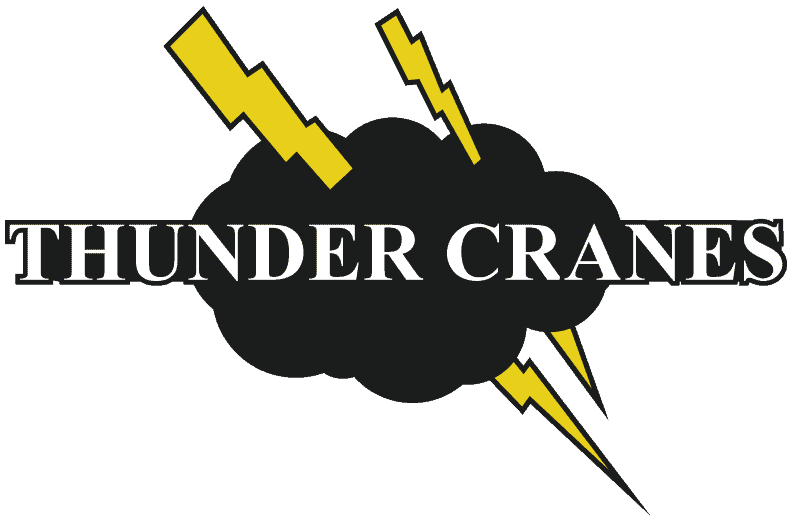Thunder Cranes provided engineered lifting support for a CTU Cement Packer operation offshore Malaysia. The main challenge was to design a modular crane installation compatible with the platform’s structural limitations and allowable reaction forces. Our scope included detailed engineering, crane deployment, CTU transfer from the supply vessel, deck installation, and ongoing lifting support throughout operations. The heaviest lift was 10.8 MT. This project highlights Thunder Cranes’ expertise in delivering safe, engineered lifting solutions in constrained environments.
Our client – a major Malaysian oil & gas producer – reached out to Thunder Cranes to provide a safe and cost-effective lifting solution for a CTU Cement Packer operation at the D18 offshore gas field in Sarawak, Malaysia.
Our client’s objective was to install a cement retainer packer via coiled tubing, as well as to perform some additional perforation works. The main platform’s pedestal crane was limited to 5MT lifting capacity, while the heaviest lift to be executed during the project was 10.8MT. Lifting solutions explored by our client via barge or vessel cranes were either not viable or not cost effective.
Therefore, our client required a temporary, portable-modular rental crane from Thunder Cranes to assist with the lifting of the CTU from the supply vessel, followed by CTU installation support on the platform deck, as well as further lifting support for CTU operations throughout the project.
Thunder Cranes proposed the TC20SL modular crane and as per procedure we conducted a detailed site survey and provided our client with a comprehensive report and method statement, including the proposed crane rig up position and the reaction forces for structural analysis.
While a 10.8MT offboard lift is well within the capacity of our TC20SL, the initial crane installation proposal using our standard rig up format failed the client’s structural analysis. Reaction forces on the offshore platform’s structural members, at the specific location where the crane would be tied down, exceeded the allowed limit.
Developing a solution within the parameters of the “structural limitations” called for expert and detailed engineering studies. Working closely with our clients, our engineers developed a tailored installation methodology to ensure we went forward with a safe, fit-for-purpose solution.
Challenges & Solutions
- The primary challenge was the platform’s structural limitations, which required a solution to minimize localized reaction forces by distributing loads over a broader area and onto the strongest structural members. This was achieved by installing additional I-beams spanning the full width of the platform, enabling the TC20SL crane to be mounted securely while ensuring load distribution met structural integrity requirements.
- A second challenge arose due to space constraints on the platform which required spotting CTU equipment in several locations around the TC20SL. The TC20SL has 240 degrees swing coverage, and to carry out offboard lifts to/from the vessel, and spot the CTU reel positioned behind the TC20SL, the crane was installed at a diagonal orientation relative to the I-beams, rather than in the conventional parallel alignment.
Planning
- Our process begins with a thorough assessment of the client’s offshore lifting requirements and a site survey by our crane experts to verify feasibility.
- Following the site survey, our engineering team will produce a Site Visit Report with the key findings, the proposed solution, and our crane data including reaction force calculations for structural analysis.
- Once the proposal is approved, we move into detailed planning, working closely with the client to customize the project in terms of materials, equipment, 3rd party services, utilities, scaffolding, and any required platform modifications or deck reconfiguration. Where necessary our modular crane setup will be tailored to specific needs.
- Next, an engineering work pack is developed detailing the scope, lifting plan, layout drawings, method statements, hazard identification and risk assessments.
- Depending on the project location, preparation and deployment may begin months in advance to ensure cranes and equipment are at the load-out port, ready for offshore transport and assembly on schedule.
- During mobilization further risk assessments and alignment sessions with offshore personnel are conducted to ensure safe and efficient crane operations.
Steps/Timeline
- Load out from port and sailing to platform via supply boat.
- Offload TC20SL, I Beams and components from supply boat using platform crane.
- Transfer TC20SL, I Beams and components to final location by skidding systems.
- I Beam installation, TC20SL rig up and load testing.
- Lift CTU and project equipment / materials from supply boat.
- Support CTU rig up and CTU operation lifting requirements.
- Rig down CTU and backload to supply vessel.
- Rig down TC20SL and backload to supply vessel.
- Crew demobilization and return to base.
Total project time from load to demob was 97 days.
Outcome
The CTU Cement Packer and Additional Perforation works were successfully completed with Thunder Cranes providing critical lifting solutions for the project to proceed in a cost-effective and safe manner.
Thunder Cranes engineered and executed a tailored installation methodology for our modular offshore crane. The project exemplifies Thunder Cranes’ capability in delivering engineered lifting solutions in complex offshore environments, particularly where platform infrastructure presents significant constraints.
Application
- Lifting Solution for Gas Lift Compressor Motor Offshore
Challenges
- Challenging Rig Up Location
- Space Constraints
- Gas Environment
- Heavy Lift – 18mt
Our Service
- Offshore Rental Crane TC20 & TC05
- Complex Rigging Solutions
- Crane Operators
- Detailed Planning & Preparation
Benefits
- Cost effective, safe, precision lifting solutions
Location
- Angola

